The McLaren Senna is, hands down, one of the most focused and wild road-legal track cars ever—like, ever. It’s a tribute to Formula 1 legend Ayrton Senna, but it’s also McLaren’s way of flexing its muscles in aerodynamic performance.
McLaren built the Senna as their lightest car since the iconic F1—just 1,198kg. That’s featherweight for a car packing 800 horsepower from its twin-turbo V8, all aimed at making it the ultimate road-legal track beast.
Comfort? Practicality? McLaren tossed those overboard. This car is all about the track, no apologies—just pure adrenaline.
When McLaren dropped the Senna on the world, car lovers everywhere started arguing about that brutal, almost cartoonish design. Huge front overhang, giant side intakes, and a rear wing that looks like it’s straight out of a comic book.
Still, every single one of the 500 cars sold out before buyers even saw the finished product. No one bailed after the reveal, which says a lot. The Senna delivers a bonkers 1,764 pounds of downforce at 155 mph—40% more than the P1.
So, how did McLaren cram so much racing tech into something you can (technically) drive on the street? Let’s poke around the carbon fiber, the wild aero, and see how this car changed the game. If you’re a fan of speed, engineering, or just beautiful, dramatic machines, this story’s for you.
Origins and Development
The McLaren Senna came out of a wild ambition: build the ultimate track-focused supercar. McLaren drew straight from the legend of Ayrton Senna, the Brazilian F1 superstar who basically owned the late ‘80s and early ‘90s with McLaren.
This project was all about performance—no frills. When it debuted at the 2018 Geneva Motor Show, people couldn’t stop talking about it.
Inspiration and Purpose
The Senna is the third act in McLaren’s Ultimate Series, following the F1 and P1. Their main goal? Faster laps, lighter body, and smarter aerodynamics.
Instead of going hybrid like the P1, McLaren went old-school: cut the weight, skip the electric bits. That’s commitment to pure speed without extra tech baggage.
The McLaren Senna was built with one thing in mind: dominate the track. Every design choice screams speed.
Ayrton Senna’s Influence
This car is a love letter to Ayrton Senna, who racked up three World Drivers’ Championships and thirty-five Grand Prix wins with McLaren.
During Senna’s era, McLaren nailed four straight Constructors’ Championships. That’s legendary stuff.
McLaren Automotive locked down the Senna name through a deal with the Instituto Ayrton Senna. Nobody else gets to slap that name on a car.
Honestly, it’s a beautiful tribute. Senna’s fearless drive and hunger for perfection are baked right into the car’s DNA.
Development Process and Engineering Vision
McLaren started with the 720S platform, then went wild. They created a new carbon fiber monocoque, the MonoCage III, to keep things light as a feather.
The engineers obsessed over three things: weight, aerodynamics, and power. They took the 720S’s twin-turbo V8 and turned it into the M840TR.
Key Engineering Specs:
- Engine: 4.0L twin-turbo V8
- Power: 789 hp at 7,250 rpm
- Torque: 590 lb-ft at 5,500 rpm
- Dry Weight: 2,641 lbs
- Power-to-Weight: 668 hp/ton
They didn’t care about pretty—every scoop and wing is there to slice air and glue the car to the road. That rear wing? It’s massive. The double diffuser and F1-style roof scoop? Pure function, pure drama.
Debut Event and Public Reaction
McLaren dropped the Senna online on December 10, 2017, and the buzz was instant. By the time it hit the 2018 Geneva Motor Show, everyone had an opinion.
The styling was divisive—some loved the “no compromise” vibe, others thought it was too much. Either way, nobody ignored it.
Production Details:
- Total Units: 500
- Price: £750,000 ($1M USD)
- Timeline: 2018-2020
- Built In: Woking, Surrey, England
Every single car sold before production started. The last one at auction? It fetched £1,916,793. That’s almost triple the sticker price.
Media couldn’t get enough of the Senna’s F1 roots and Ayrton’s legacy. Most agreed: it’s a technical marvel, but not something you’d want for a grocery run.
Name, Brand Impact and Legacy
The McLaren Senna’s name just hits differently. It’s not just a badge—it’s a salute to Ayrton Senna and a stake in the ground for McLaren in the hypercar world.
Naming After Ayrton Senna
McLaren picked the name to honor Ayrton Senna, who tragically died in 1994 but left a mark nobody can erase. The Senna badge is more than a name—it’s a promise to chase perfection, just like Ayrton did.
Senna’s three F1 World Championships—especially those in ‘88 and ‘90 with McLaren—are the stuff of legend. His partnership with the team gave us some of racing’s most unforgettable moments.
This wasn’t just a branding move. The car lives and breathes Senna’s “never settle” attitude. It’s a mechanical monument, if you ask me.
Influence Within McLaren’s Hypercar Lineup
The Senna stepped in after the P1 and really shook up the hypercar scene. Its track-first mentality started influencing everything McLaren did next.
Aero wizardry and weight loss became McLaren trademarks. Carbon fiber, active aero—these became must-haves in the brand’s playbook.
Only 500 Sennas exist, and that exclusivity turned up McLaren’s cool factor. Suddenly, limited runs became their thing.
With a price tag of £750,000, McLaren showed it could go toe-to-toe with Ferrari and Lamborghini in the world of the ultra-rich and ultra-fast.
Long-Term Brand Significance
The Senna marks a turning point for McLaren. They went from race team to legit carmaker with this one. It proved they could build road cars that don’t just nod to their racing past—they honor it.
Its tech—especially the aero and carbon fiber stuff—set the bar higher for everyone. Suddenly, other brands scrambled to catch up with active aero and featherweight builds.
Key Brand Impact:
- Boosted McLaren’s rep for no-compromise performance
- Earned real street cred in the hypercar arena
- Kept the Formula One connection alive and kicking
- Gave McLaren a blueprint for future limited editions
The Senna’s instant sell-out? Proof that McLaren could whip up demand for ultra-premium toys. That kind of validation fired up more hypercar projects and pushed the brand into new, wild performance territory.
Engine Specifications and Performance
At the heart of the Senna beats a monster: a 4.0-liter twin-turbo V8, tweaked and tuned to crank out 789 horsepower. Lightweight construction everywhere you look. It’s a symphony of carbon fiber and mad science.
M840TR 4.0L Twin-Turbo V8 Engine
The Senna’s engine is a souped-up M840TR from the 720S. This 3,994cc twin-turbo V8 howls out 588 kW (789 hp) at 7,250 rpm.
Torque? 800 N⋅m (590 lb⋅ft) at 5,500 rpm. Power runs through a seven-speed dual-clutch box straight to the rear wheels—no frills, just fury.
McLaren’s engineers beefed up the cooling with serious radiators. The top-mounted inconel-titanium exhaust, with its trio of pipes, looks as wild as it sounds. Take a listen yourself
No hybrid tricks here—just pure combustion. McLaren chose less weight over fancy electrification, and honestly, it sounds like the right call for a car like this.
Performance Metrics and Track Capability
The Senna launches from 0-100 km/h in 2.8 seconds. Blink and you’ll miss it. 200 km/h comes up in 6.8 seconds, and the quarter-mile flashes by in 9.9 seconds.
The supercar tops out at 335 km/h (208 mph). With a power-to-weight ratio of 668 hp per ton, it’s basically a rocket with mirrors.
Key Performance Stats:
- 0-300 km/h: 17.5 seconds
- Power-to-weight: 498 kW/ton
- Max power: 7,250 rpm
- Peak torque: 5,500 rpm
This car is built for the track, no question. McLaren made the Senna to chase lap times, not luxury. And isn’t that kind of beautiful?
Lightweight Construction and Carbon Fiber Monocoque
The McLaren Senna tips the scales at just 1,374 kg, and honestly, that’s wild. It owes this featherweight status to some pretty obsessive lightweight construction choices, like McLaren’s MonoCage III carbon fiber monocoque chassis.
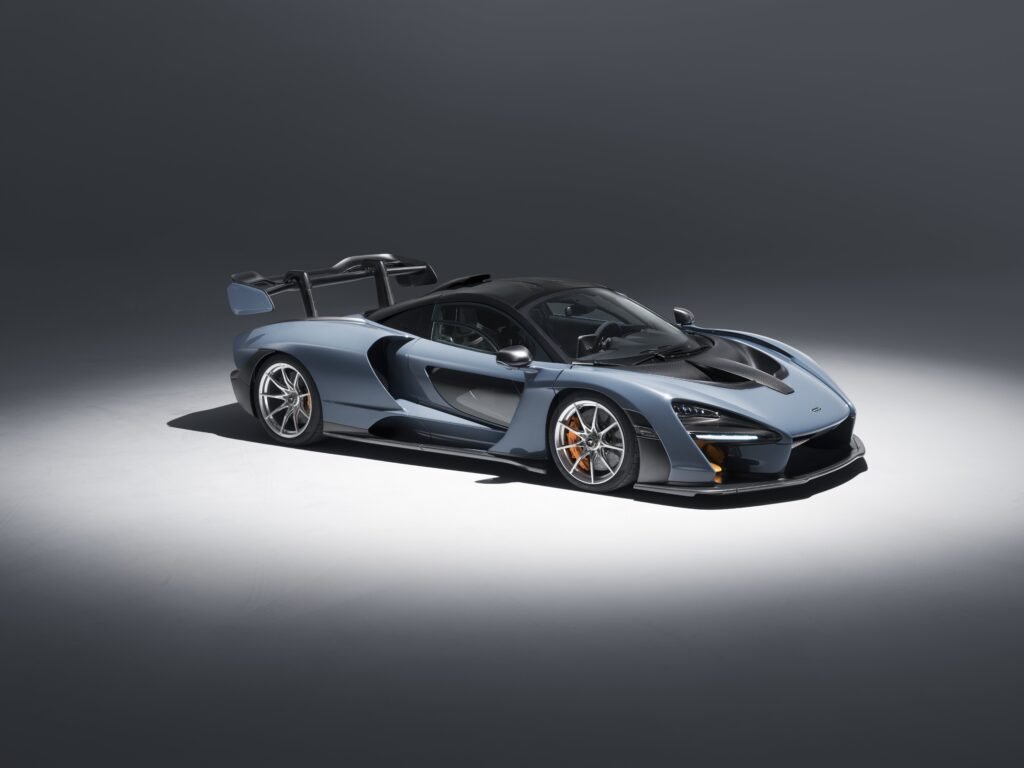
This carbon fiber monocoque doesn’t just sound cool—it really pulls its weight (or, well, lack of it). The structure makes the car rigid as a steel beam while keeping the mass way down, with a dry weight of only 1,198 kg.
McLaren didn’t stop at the chassis. They went all-in, throwing on carbon ceramic brakes that handle heat better than my oven mitts.
New lightweight center-lock alloy wheels shave off even more unsprung weight. Inside, it’s a festival of exposed carbon fiber and barely-there sound deadening—music to any purist’s ears.
Put all this together with that beastly engine, and you’ve got the Senna’s truly jaw-dropping performance. Among modern hypercars, it’s like a cheetah in a field of elephants—light, nimble, and ready to pounce.
Exterior, Interior, and Aerodynamics
The McLaren Senna? It’s all about function over form, and it doesn’t apologize for it. Every line, every vent, every bolt is there to make it faster, stickier, and meaner.
The active front aero blades and that wild rear wing crank out up to 800kg of downforce. Inside, it’s stripped down to just what the driver needs—nothing more, nothing less.
Design Philosophy and Exterior Elements
The Senna takes McLaren’s “form follows function” mantra and turns it up to eleven. Every curve is there for a reason—usually to slice air or glue the car to the tarmac.

The front splitter looks like it could chop wood, but it’s all about channeling air. Giant air intakes up front gulp in air for cooling and downforce—no fake vents here.
Key Exterior Features:
- Front splitter: Slices and channels airflow under the car
- Side air intakes: Feed the twin-turbo V8 all the cool air it craves
- Rear wing: Moves on its own for max downforce or less drag, depending on your mood (and speed)
- Weight: Just 1,198kg—lighter than a lot of hatchbacks
That carbon fiber monocoque isn’t just for show. Body panels get the carbon treatment too, all in the name of keeping the Senna light enough to float on a breeze—well, almost.
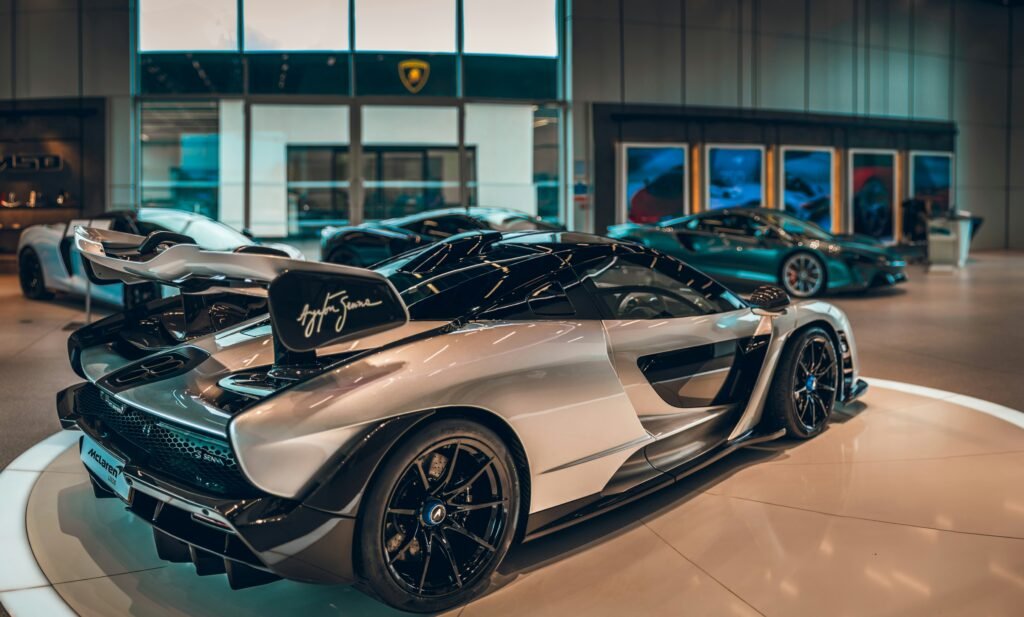
Interior Layout and Driver-Focused Features
Inside, luxury takes a back seat—actually, there isn’t much of a back seat at all. The interior’s stripped to the essentials, and it’s glorious if you’re into pure driving.
Those racing-inspired seats? They’re basically carbon shells with just enough padding to keep you from bruising. The steering wheel puts every control right under your thumbs, so you never have to let go.
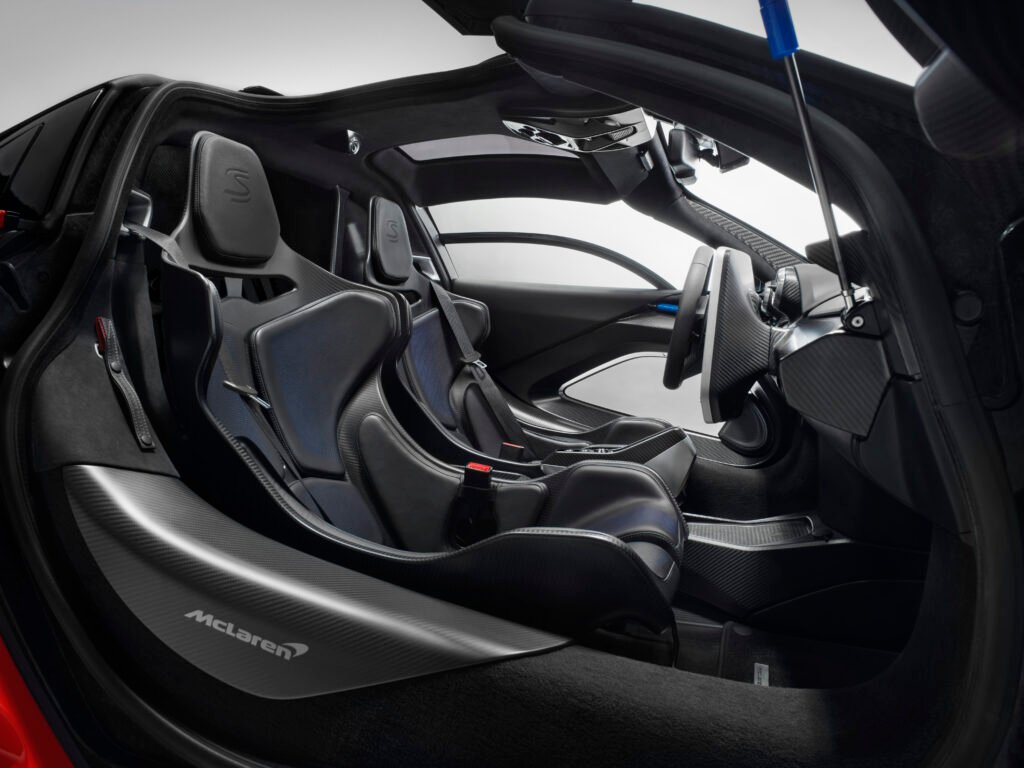
Interior Highlights:
- Seating: Fixed racing buckets—don’t expect a massage function
- Dashboard: Just the basics; if it’s not useful on track, it’s gone
- Materials: Carbon fiber and Alcantara everywhere
- Weight savings: No sound deadening, no comfort fluff
Visibility is king here. Big windows and skinny A-pillars mean you can see apexes and rivals with ease. It’s almost beautiful how purpose-driven it all feels.
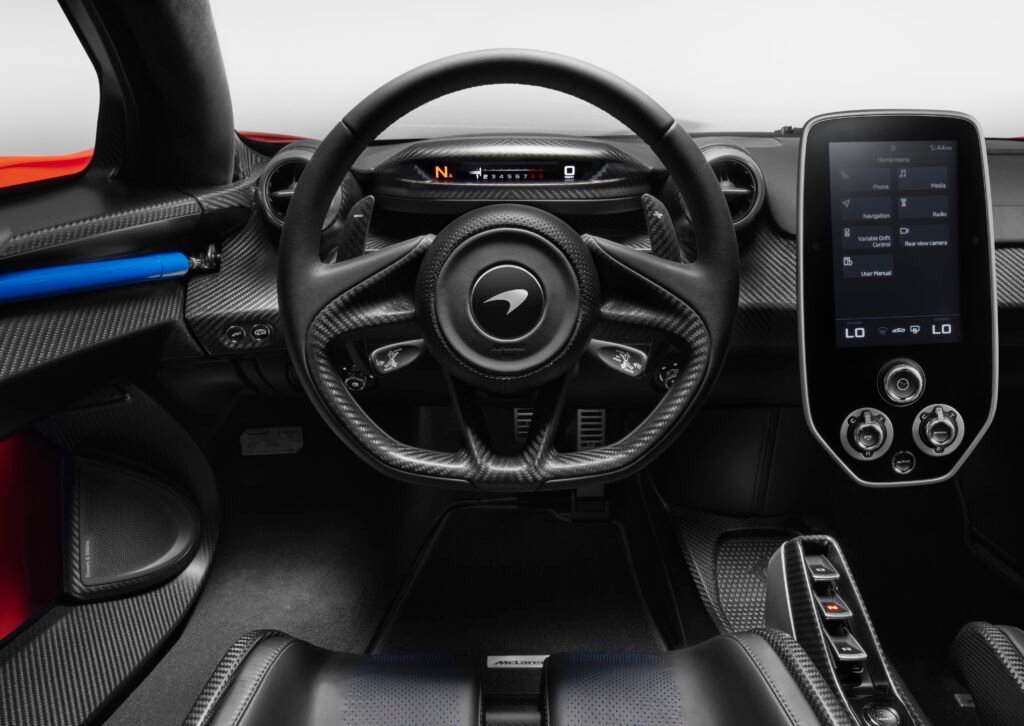
Advanced Active Aerodynamics
McLaren’s active aero tech in the Senna isn’t just advanced—it’s borderline witchcraft. The front aero blades and rear wing work together like a pair of synchronized swimmers.
Everything adjusts on the fly. The front blades tilt to direct air, and the rear wing angles itself for either maximum grip or less drag, depending on what your right foot’s doing.
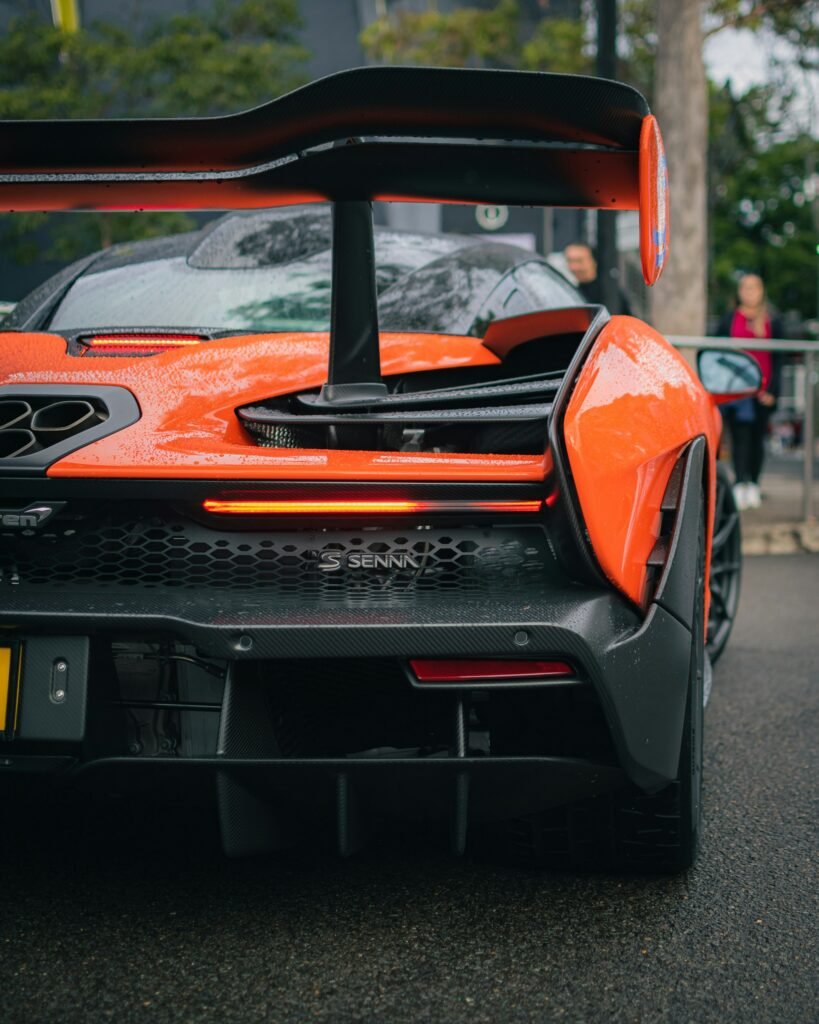
Active Aero Components:
- Front aero blades: Move automatically to guide air perfectly
- Rear wing: Changes its angle with speed and drive mode
- Downforce generation: Up to 800kg—enough to pin you to your seat
- Balance optimization: Keeps the car feeling just right, front to back
This aero wizardry makes the Senna feel glued to the road. It’s like the car’s always one step ahead, letting you chase your limits with a grin.
Variants, Special Editions, and Lap Records
The McLaren Senna didn’t just show up and call it a day. It spawned wild siblings like the track-only GTR and the ultra-rare LM, while smashing lap records all over the globe. That’s a legacy most cars can only dream about.
Standard McLaren Senna Overview
The “regular” Senna set the stage for everything that followed. McLaren built just 500 road-legal versions from 2018 to 2019—blink and you missed it.
Each one packs a 4.0-liter twin-turbo V8 with 789 horses. Thanks to that carbon monocoque, it weighs just 2,641 pounds—light enough to make rivals sweat.
Active aero, including a deployable rear wing, comes standard. Every Senna rolled out of McLaren’s Woking HQ, hand-assembled by people who probably have nerves of steel.
Customization? Oh, absolutely. McLaren Special Operations (MSO) let buyers go wild with colors, trims, and aero tweaks—within reason, of course. The track focus always stayed front and center.
Senna GTR: Track-Only Evolution
The Senna GTR is the road car’s wilder, less civilized sibling. McLaren built just 75 of these monsters, making them even rarer.
Key GTR improvements:
- Cranked power up to 814 hp
- More downforce, thanks to a fixed rear wing
- Wider track, racing slicks—grip for days
- Interior stripped bare, full roll cage added
- Slimmed down to 2,619 pounds
The GTR looks even angrier, with a huge splitter and a rear diffuser that could double as a cheese grater. No road-legal nonsense—just pure, unfiltered track fury.
Racing suspension and brakes match the aero insanity. At 155 mph, it generates 2,205 pounds of downforce. That’s almost enough to drive upside down, or so they say.
Senna LM and Ultra-Rare Editions
The Senna LM? Now that’s a unicorn. McLaren built it to toast their 1995 Le Mans win, and only 20 exist. Blink and you’ll miss one—if you ever see one at all.
It’s decked out in Papaya Orange with blue accents and borrows the GTR’s aero, just tuned for the street. The LM is special, no question.
McLaren Beverly Hills snagged three Senna XP editions that started as prototypes. MSO turned them into road-legal, one-off masterpieces.
The XP cars kept their test equipment and unique serials—rolling pieces of Senna history, really.
There’ve been Carbon Theme packages and wild paint combos too. McLaren loves making each Senna just a bit more exclusive than the last—it’s an art form.
Lap Records and Awards
The Senna didn’t just show up at tracks—it owned them. It broke four production-car lap records in top US publications, making headlines everywhere.
Notable achievements:
- Virginia International Raceway: 2:34.9 (Car and Driver Lightning Lap champ)
- Laguna Seca: 1:27.62 (first production car to crack 1:28)
- NCM Motorsports Park: 2:02.86 (fastest production car—period)
- NCM West Circuit: 1:23.34 (Road & Track PCOTY record)
The Senna also set a street-legal lap record at Interlagos in Brazil—Ayrton Senna’s home turf. That just feels poetic, doesn’t it?
But hey, nothing lasts forever. The 2025 Chevy Corvette ZR1 finally knocked the Senna off its VIR throne with a 2:32.3. The king is dead—long live the king.
For those of you who are asking about the Green Hell (Nurburgring) record, well officially there’s no record, unofficially the Senna clocked in at 6:52.01 according the supercarblog.
Market Value, Competitors, and Ownership
Want a Senna? Better have deep pockets. Prices have soared past the original MSRP, and with only a handful out there, collectors are always circling. It’s not just a car—it’s a status symbol, a piece of rolling art, and a ticket to an exclusive club.
Price Evolution and Collector Value
When it launched, the Senna started at $958,966 in the US. Only 500 were built, so you can guess what happened next—instant scarcity, instant demand.
McLaren’s limited editions have rocked the luxury car world. The Senna’s a collector magnet, with prices often climbing above original sticker on the used market.
It’s not just the numbers, though. The Formula 1 tech and the Senna name add a layer of magic—call it emotional value. This isn’t just another hypercar; it’s the ultimate track weapon for the road, and the market knows it.
Auctions keep proving the Senna’s value. Between the rarity and the performance, collectors aren’t letting go anytime soon. It’s a beautiful thing, really—scarcity meets obsession.
Key Competitor Cars
The Senna’s in a knife fight with other $1 million track monsters. The Ferrari 488 Pista? Sure, it’s quick, with a naturally aspirated V8 and a wind-tunnel obsession.
Porsche’s 911 GT2 RS runs similar lap times and costs less, while the Lamborghini Huracán Performante brings wild looks and its own aero tricks. The competition isn’t sleeping.
But McLaren’s answer? Go harder. The Senna’s got Formula 1-grade aero, a carbon tub, and active suspension that makes rivals feel old-school. It doesn’t try to coddle you—just to thrill you.
While others balance comfort and speed, the Senna throws comfort out the window in pursuit of lap times. It’s not for everyone, but if you love the track, it’s hard to think of anything more beautiful.
Notable Owners and Cultural Allure
The McLaren Senna pulls in owners from motorsport, entertainment, and the business world. Many buyers have deep ties to Formula 1 or pro racing—naturally, they’re obsessed with the car’s wild, track-focused DNA.
Some celebrities have jumped in and cranked up the Senna’s hype, taking it way beyond the usual car geek crowd. The name “Senna” just hits different, especially for Formula 1 fans who grew up idolizing the legend himself.
Key Owner Categories:
- Professional race drivers
- Formula 1 personalities
- Automotive collectors
- Tech entrepreneurs
Honestly, the Senna’s radical design and tribute to Ayrton Senna spark emotions that most supercars can’t touch. There’s something almost poetic about it—like owning a piece of racing history, not just a machine.
High-profile owners love showing off their Sennas online, and social media eats it up. Those track day videos and behind-the-scenes peeks just keep cementing its reputation as the ultimate McLaren road car. Beautiful, isn’t it?
Final Words
The McLaren Senna is more than just a supercar—it’s a masterpiece born from passion, precision, and relentless pursuit of perfection. Every curve, every roar, every moment behind the wheel is a testament to what happens when engineering meets emotion. It’s not just about speed; it’s about the feeling—the heartbeat racing, the adrenaline surging, and the soul ignited. The Senna doesn’t just drive; it commands, inspires, and forever changes the way we experience performance. This is more than a car. It’s a legend in motion.
Thanks for reading! If you enjoyed this deep dive, be sure to subscribe to my email list for exclusive car reviews, insider tips, and weekly special offers on car parts, auctions, and gear — perfect for any car enthusiast.
If you have any thoughts or experiences with this car? Leave a comment below — I love hearing your opinions and sparking conversations with fellow enthusiasts.
And don’t forget to read related posts for more great content!

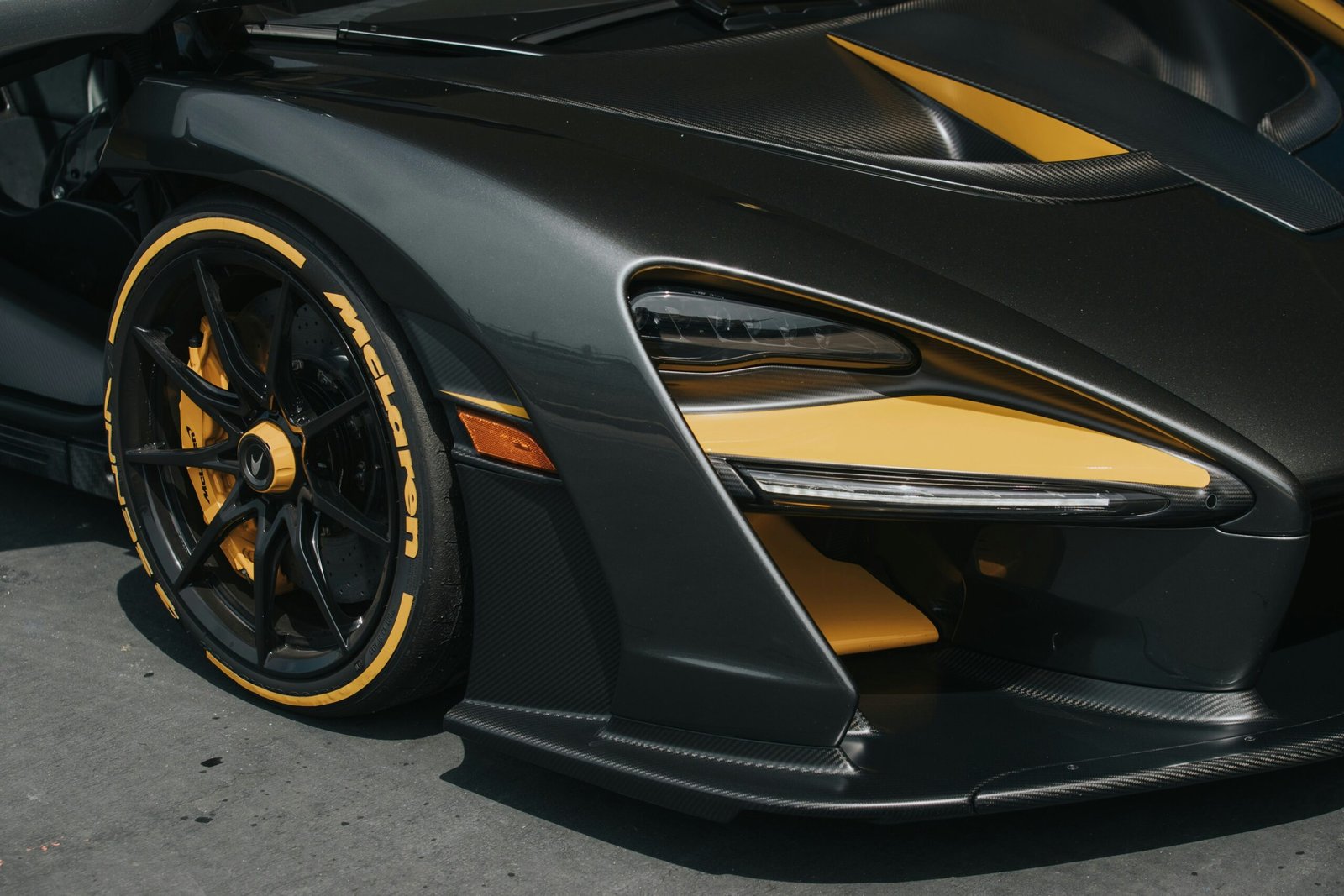

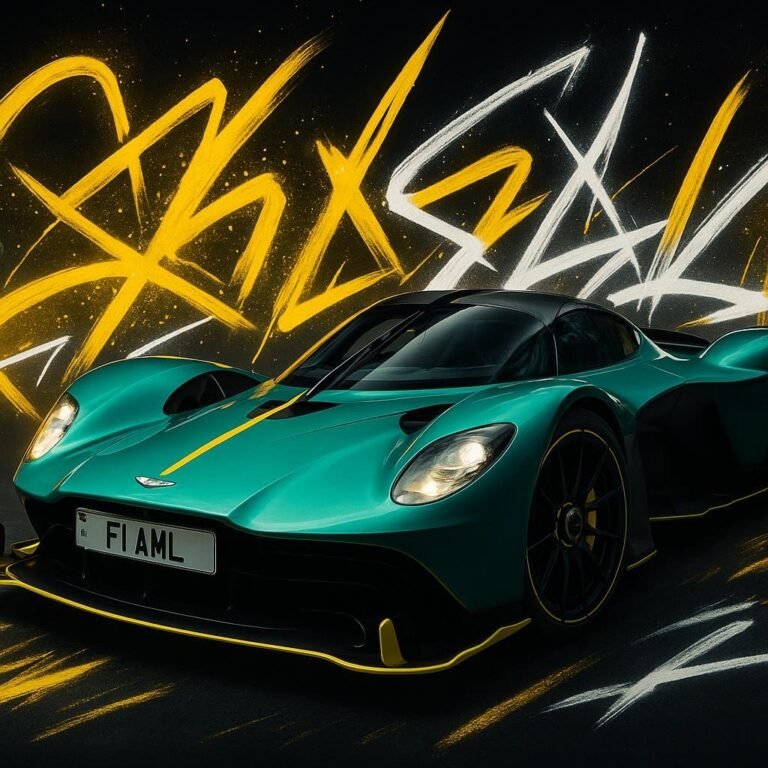
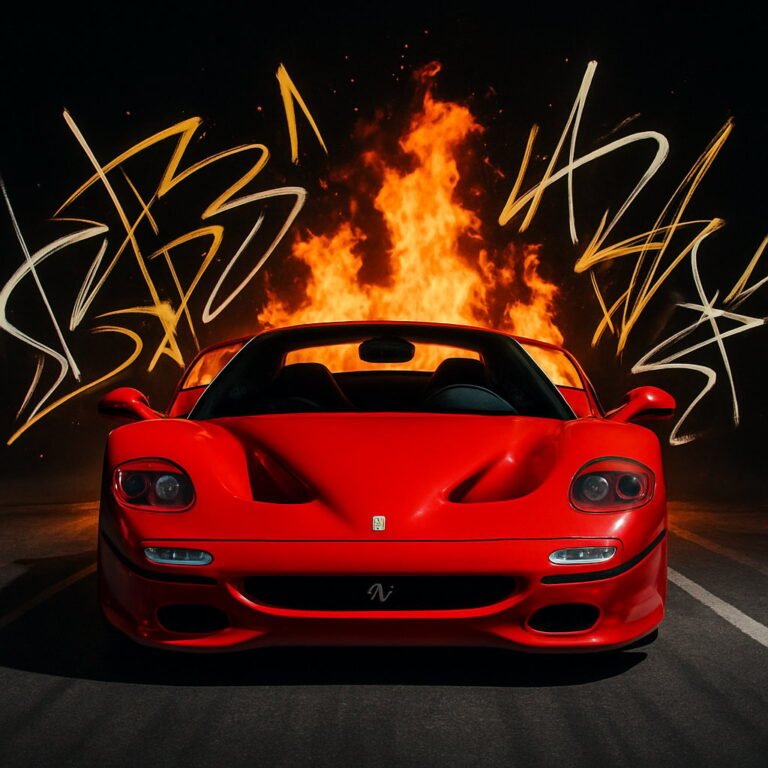
[…] that was enough to outpace the Ferrari F40 and even the Lamborghini Diablo. The XJ220 held the fastest street-legal car title for a few years, which is no small […]
[…] Reviewers warn: the F40 doesn’t suffer fools. It demands respect, but if you’ve got the skill and nerve, it rewards you with otherworldly performance. […]
[…] can’t help but gush about the raw, intoxicating drive—even if they admit it’s unforgiving for the […]